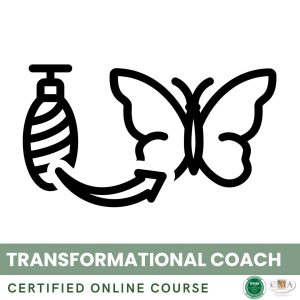Integrating spirituality into everyday life is the natural result of an authentic inner journey. It is not about compartmentalizing spirituality into isolated moments of practice or retreat, but rather about letting it infuse every aspect of our existence. It is by concretely embodying spiritual teachings and values in our thoughts, words, and actions that we bring them to life and gradually transform our reality.
One of the cornerstones of this integration is regular practice and personal discipline. Just as we take care of our body by exercising it and feeding it healthily, our spiritual life requires daily commitment to flourish. Setting aside time each day for meditation, prayer, studying sacred texts, or any other practice that inspires us, creates a solid foundation to build our day upon. Even a few minutes of introspection in the morning or evening can make a significant difference, reconnecting us to our center and our deep aspirations.
The Dalai Lama, despite his many responsibilities, devotes several hours each morning to meditation and study before starting his day. This rigorous discipline is for him the key to cultivating inner clarity and compassion in action.
Beyond formal practice times, the challenge is to develop mindful presence at every moment. Rather than living on autopilot, lost in thoughts or reactions, we are to be fully present to what we experience. Breathing is a valuable anchor to return to the present moment, to connect us to our body and our senses. By cultivating this quality of attention, we can transform the simplest gestures – eating, walking, talking, listening – into opportunities to awaken to the beauty and depth of each moment.
Thich Nhat Hanh, a Vietnamese Buddhist master, developed the practice of mindfulness in action. He suggests, for example, reciting verses while doing the dishes, to be fully present with every gesture: “I wash this bowl with the tenderness that I would give to a newborn. I dry this bowl with the lightness of a butterfly on a flower.” Thus, even the most prosaic tasks become entry points into peace and joy.
Another vital aspect is to apply spiritual principles in our relations and our work. How do we communicate with our loved ones? Are we listening, empathetic, kind? How do we react to conflicts or differences of opinion? Are our words and actions aligned with our values? In our workplace, do we embody integrity, respect, cooperation? Each interaction becomes a practice ground to cultivate the qualities of the heart and express our spirituality in action.
Gandhi, the grand sage and Indian political leader, strived to live by the principle of ahimsa, or non-violence. This manifested in his relationships through deep listening to others, humility in acknowledging his mistakes, and rejection of all forms of oppression or discrimination. His spiritual commitment permeated all spheres of his life, from the intimate to the political.
The integration of spirituality also involves commitment to altruistic actions and service. Recognizing our interdependence and our responsibility towards the world, we are naturally inclined to put our gifts and resources to the service of the common good. This can take many forms, such as volunteering, supporting humanitarian causes, ecological commitment, transmitting wisdom… By working to alleviate suffering and raise consciousness around us, we give deep meaning to our life and participate in the healing of the world.
Mother Teresa dedicated her life to serving the poorest in the slums of Calcutta. With extraordinary determination and compassion, she created hospices, schools, shelters for the forgotten. Her total devotion was an expression of her deep faith and unconditional love. For her, every act of tenderness towards someone in need was a prayer in action, a way to “quench God’s thirst for love in the world”.
Lastly, integrating spirituality into daily life is also about cultivating gratitude, presence, and wonder. Taking time each day to contemplate the beauty around us, appreciate the little things, say thank you for all the gifts of life. Taming the inner silence to savor the peace that is always there, beneath the turmoil of the mind. Opening up to the novelty of each moment, with the freshness and innocence of a child’s gaze. This heart attitude transforms our perception of the world and connects us to the sacred aspect of existence.
The poet Rumi invites us to this amazement when he writes: “The whole Creation is a sea, and every drop contains the reflection of the moon. Look into your heart: you will find the whole Universe there.” Thus, every instant of life becomes an opportunity to awaken to the splendor that inhabits and surrounds us.
Integrating spirituality into our life is a gradual journey, requiring practice, patience, and self-kindness. It is not about aiming for an illusory perfection, but about moving forward step by step, staying attuned to our heart and our inner wisdom. Each situation becomes an invitation to embody our truth a bit more deeply, to align our actions with our highest aspirations. And so, day after day, moment by moment, we weave a life permeated with meaning, beauty, and sacredness.
The Zen master Shunryu Suzuki summed this up in a simple sentence: “Spiritual practice is not something you do at certain times, it is your life at every moment.” Thus, by welcoming spirituality at the heart of our everyday life, we make our life itself the most beautiful path of awakening.
Key points:
1. Integrating spirituality into everyday life is the fruit of an authentic inner journey. It is about letting spirituality permeate every aspect of our existence.
2. Regular practice and personal discipline are essential foundations. Setting aside time each day for meditation, prayer, or study creates a solid base.
3. Developing mindful presence at every moment allows transforming the simplest gestures into opportunities to awaken to the beauty and depth of each moment.
4. Applying spiritual principles in our relations and work is crucial. Every interaction becomes a practice ground to cultivate the qualities of the heart.
5. Commitment to altruistic actions and service gives deep meaning to our lives and allows us to participate in the world’s healing.
6. Cultivating gratitude, presence, and wonder transforms our perception of the world and connects us to the sacred dimension of existence.
7. Integrating spirituality is a gradual journey that requires practice, patience, and kindness to oneself. Each situation is an invitation to embody our truth a bit more deeply.
8. By welcoming spirituality at the heart of our daily life, we make our life itself the most beautiful path of awakening.
👉 To download docx (Editable) file click here : Click here
👉 To download PDF file click here : Click here
👉 To download MP3 file click here : Click here







